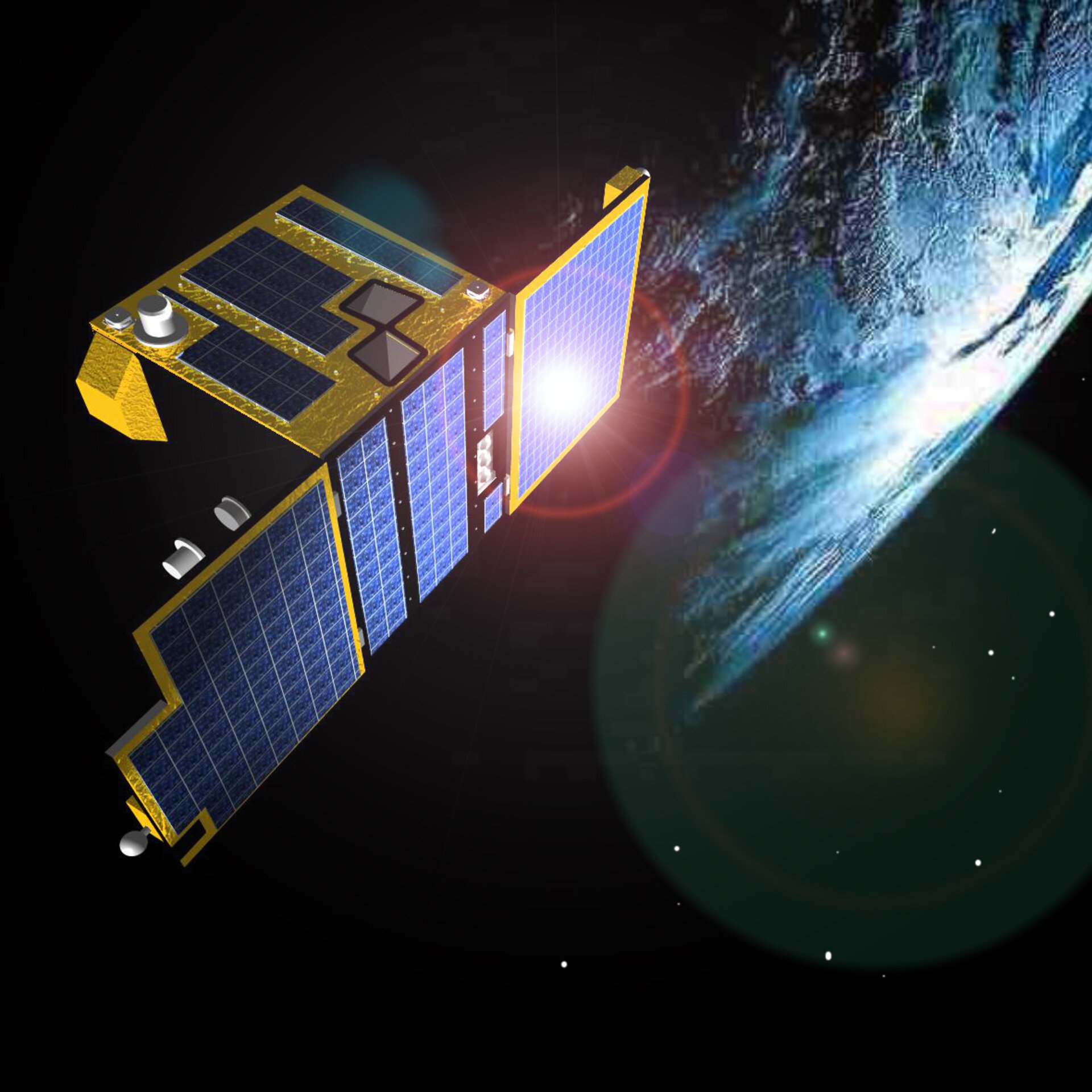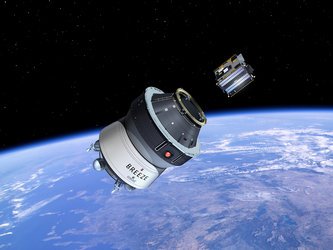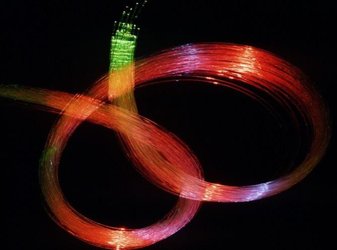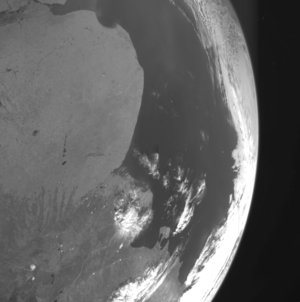Laser tag caps Proba-2’s technology-testing year
Proba-2’s first year in space proves that small size does not prevent significant science return. To date, the microsatellite has returned more than 180 000 images of the Sun along with other solar and space weather data, while demonstrating a range of advanced technologies.
Launched on 2 November 2009 with the full-sized SMOS mission, the microsatellite carries a total of 17 new technologies that are being put to the test one by one.
For instance, Proba-2 incorporates two experimental GPS receivers: one specifically developed for telecom and Earth observation satellites, built by Thales, and a highly miniaturised version developed by the German Aerospace Center, DLR. To check their accuracy, another advanced technology was employed: a Laser Retro Reflector built into a corner of the satellite’s underside, working like a cat’s eye on the highway.
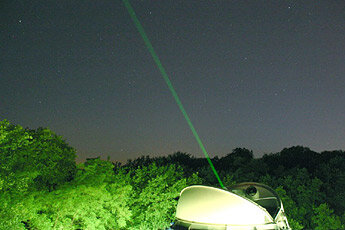
The International Laser Ranging Service (ILRS) took aim at Proba-2’s reflector to measure the satellite’s precise position. Like a planetary-scale video game, 15 ILRS stations trained lasers on Proba-2, achieving 2000 observation points across 120 passes during a two-week period.
“With these results, it was found that GPS-based precise orbit determination performed on the ground could reach an accuracy of 0.5 m, less than the dimensions of Proba-2 itself,” said Oliver Montenbruck of DLR.
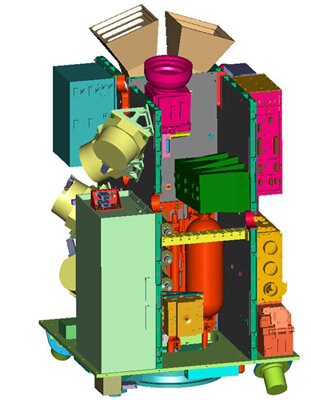
“Even on the satellite, a remarkable 1-2 m positioning accuracy could be achieved using advanced real-time navigation filters. It represents a major milestone in the art of spaceborne navigation.”
Additional technology payloads include a trio of magnetometer instruments, which establish their orientation in space through precise measurements of Earth's magnetic field.
Successful trials of the Technical University of Denmark's Science Grade Vector Magnetometer, Portugal-based Lusospace's credit-card-sized Magnetometer and ZARM in Germany's Hi-Rel Magnetometer render them available for operational use on other ESA missions including Swarm, ADM-Aeolus, Sentinel-2 and EarthCARE.
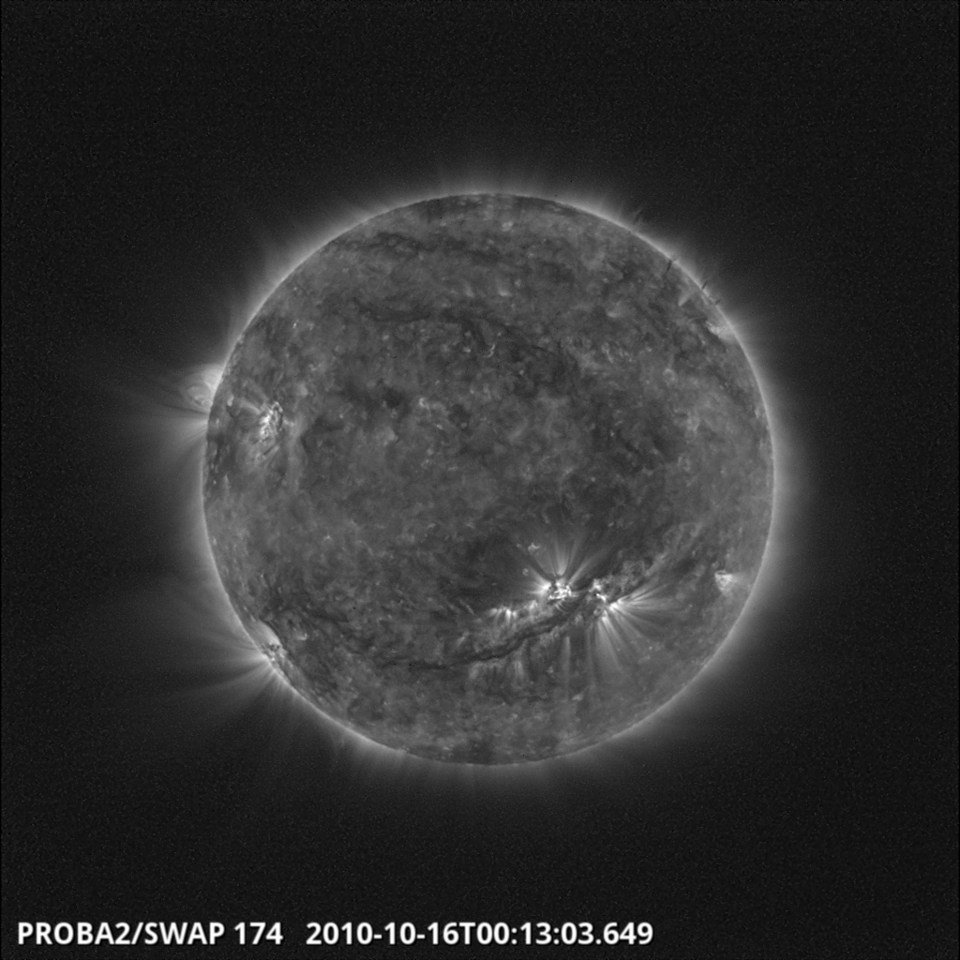
Scientifically, the mission has been equally similarly significant. The Royal Observatory of Belgium (ROB) oversees the SWAP space telescope and LYRA radiometer measuring solar intensity, both trained on the Sun.
Of all Sun-watching spacecraft, Proba-2 is by far the smallest, less than a cubic metre in volume. But Proba-2 has definitely earned its stripes.
On 16 October an intense solar flare erupted. “Imagery from other satellites was not available for that particular time,” said Petra Vanlommel of the Royal Obervatory of Belgium. “Fortunately, the SWAP and LYRA instruments were able to provide information almost instantly on the event location and determine its effects on space weather.”

Proba-2 is also serving as the ‘third eye’ of NASA’s STEREO mission – twin satellites to observe the Sun. They are gradually drifting apart, preventing the satellites from producing the stereoscopic solar views for which the mission was named. Proba-2, however, is at a central position between them and so has combined with STEREO to track solar eruptions in three dimensions.
“This experience is giving us a look at the future of solar science,” explained Dan Seaton of ROB. The shoe-box-sized SWAP is the first space-based instrument incorporating Active Pixel Sensors (APS).
Terrestrial versions are used in many cameras. The space equivalent, developed through ESA’s General Support Technology Programme, combines high sensitivity with low power demands and radiation resistance. APS will also be used for ESA’s forthcoming Solar Orbiter, which will venture closer to the Sun than any other spacecraft.

LYRA includes diamond-based detectors to preserve the instrument against harsh radiation, intended to give Solar Orbiter a similarly clear view.
Two further instruments, supplied by the Czech Republic, survey Earth’s electrically-charged ionosphere. The Dual Segmented Langmuir Probe (DSLP) and Thermal Plasma Measurement Unit (TPMU) experiments track ionised plasma particles in the satellite’s vicinity.

“So far, more than 1300 full orbits have been collected with DSLP, representing a considerable survey in the yet-to-be explored dawn and dusk regions of Earth's ionosphere,” commented Stepan Stverak of the Czech Institutes for Astronomy and Atmospheric physics.
"Up-to-date data products are available on-line and our first scientific results are being published early in 2011.”
Proba-1, meanwhile, has entered its tenth year of operations: it was launched on 22 July 2001 with its operational phase beginning that autumn and continuing to this day, gathering daily multispectral imagery for environmental scientists.


